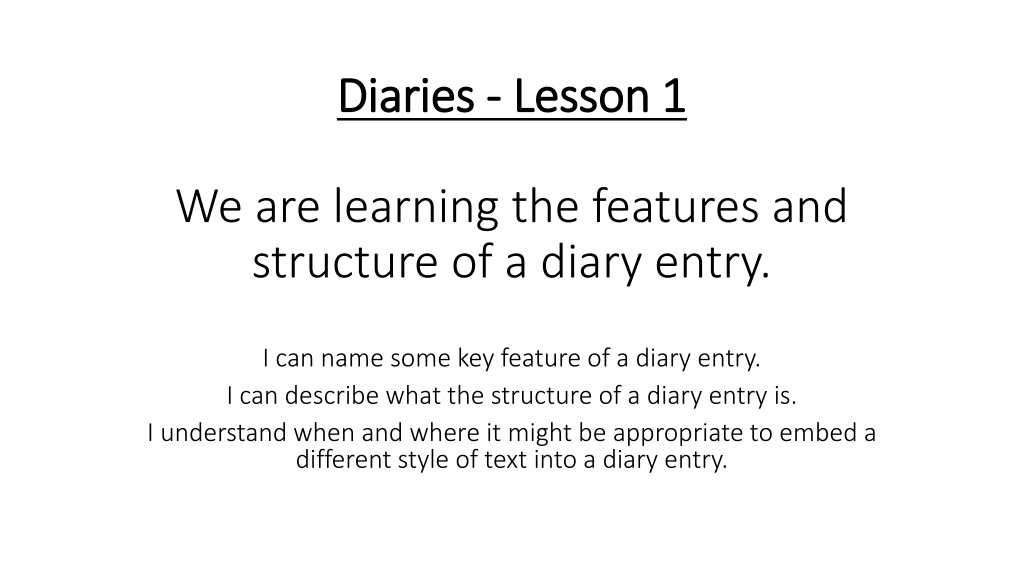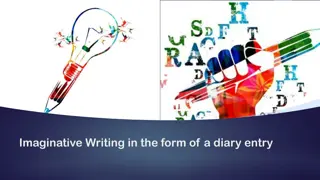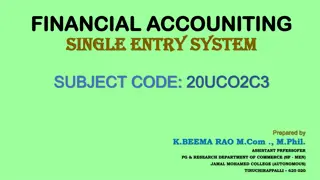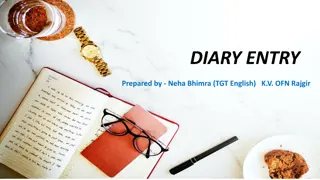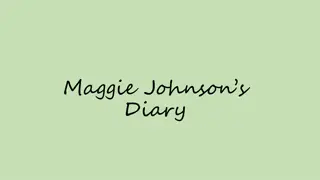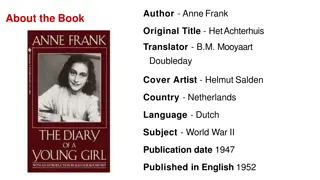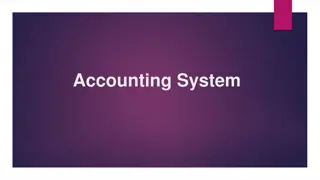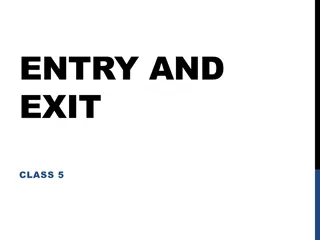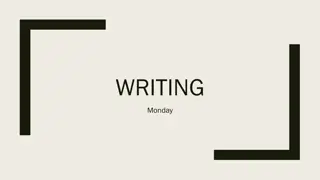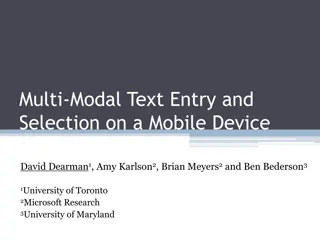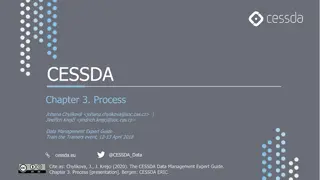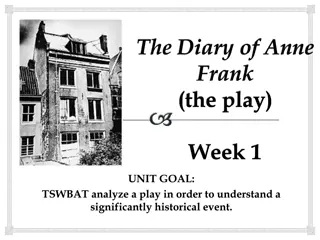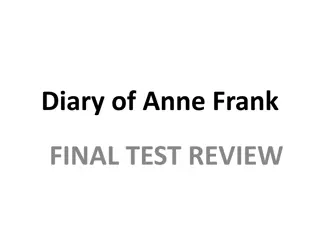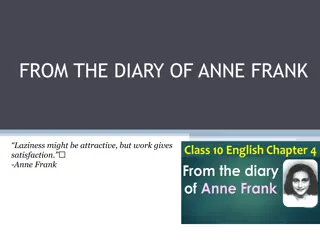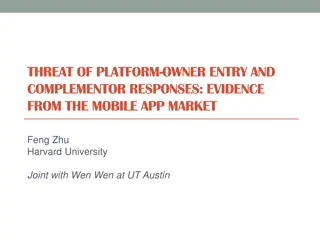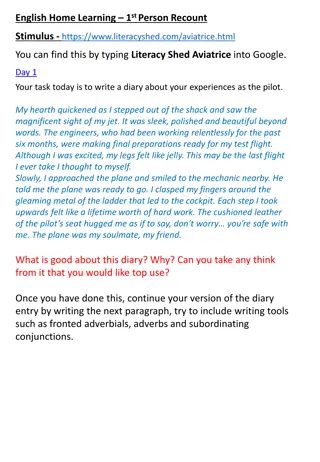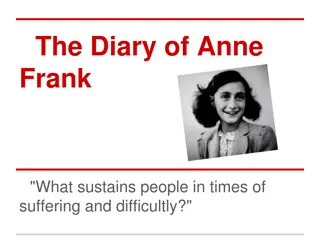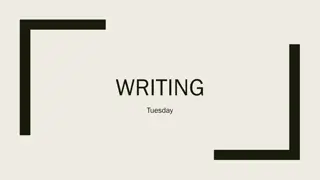Exploring the Features and Structure of a Diary Entry
Dive into the features and structure of a diary entry, understand key elements such as past tense, writer's feelings, and informal language. Discover when to use different text styles and embark on a task to analyze a diary entry by highlighting grammatical and structural features. Plus, explore the world of Alice in Wonderland and learn about recounting through engaging resources and activities.
Download Presentation

Please find below an Image/Link to download the presentation.
The content on the website is provided AS IS for your information and personal use only. It may not be sold, licensed, or shared on other websites without obtaining consent from the author. Download presentation by click this link. If you encounter any issues during the download, it is possible that the publisher has removed the file from their server.
E N D
Presentation Transcript
Diaries Diaries - - Lesson 1 Lesson 1 We are learning the features and structure of a diary entry. I can name some key feature of a diary entry. I can describe what the structure of a diary entry is. I understand when and where it might be appropriate to embed a different style of text into a diary entry.
Alice in Wonderland This half term, the school is learning all about Alice in Wonderland. Have a look at the video or read the story attached on teams and the blog page. https://www.youtube.com/watch?v=cNpuWQVeiOU
Recount A diary entry is a type of recount. Watch the following video: https://www.bbc.co.uk/teach/class-clips-video/english-ks1-ks2- how-to-write-a-recount/z7dg92p What are the ingredients of a good recount?
These are some features of a diary entry. Can you think of anymore?
Your task: Choose a diary entry. Read it through then use a highlighter or coloured pencil to find the grammatical and structural features. There is an example on the next slide and the worksheet.
Key: Past tense Parenthesis Date First person Writer s feelings Informal (chatty) language Time conjunctions Paragraphs
